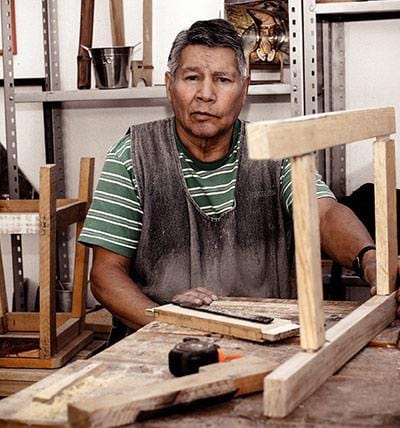The wooden jigsaw puzzle has become one of the favourite pass time and crafty activities loved by many all over the world. In modern society today, it is sometimes difficult to slow down and relax but the joy of building a jigsaw puzzle can easily contribute to the unplugging needed from day to day life.
But what is a jigsaw puzzle exactly and where did it come from?
Below you will be able to read about the jigsaw puzzle and everything there is to know about it, so that you too can experience the fun and relaxing art of puzzling.
Origins Of The Wooden Jigsaw Puzzle
Let’s start off with the word puzzle and what that means. The puzzle has been recognized and defined as an intellectual game or activity which requires the application of logic, problem solving as well as rationality. Used as an educational tool or a fun activity, the puzzle has found its way into homes, classrooms and arts and crafts activities all around the world.
The jigsaw puzzle originated centuries ago by painting a picture or image onto a piece of wood, which at the time was a rectangular shape and then cutting the picture into smaller pieces. The very first jigsaw puzzle was developed and sold by a mapmaker designer and engraver by the name of John Spilsbury, as he developed and used this puzzling technique out on maps back in 1760. He quickly realized that selling his jigsaw puzzle maps would benefit the teachings of geography.
Over time, different designs and pictures would then be painted or printed onto the rectangular cardboard and pieces cut out to create the jigsaw puzzle and arts activity we know and love today. Now, in modern age, we can find all types of designs in the jigsaw puzzle such as nature, landscapes, animals and much more. The colours and detail come together through the art of puzzling to create and potentially display a beautiful design of the jigsaw puzzle.
Benefits Of The Jigsaw Puzzle
As a parent or teacher, finding ways to not only entertain or occupy your children but to educate them during the process, is always a priority and when it comes to puzzling or building a jigsaw puzzle; developing their minds through attention, creativity, focus and arts is a great way to attend to those needs. Scientists have proven over time that the art and activity of puzzling has many benefits for anyone and even therapy modalities have incorporate jigsaw puzzles into their practice. Let’s take a look at some of the benefits of jigsaw puzzling:
- 3D Jigsaw puzzles especially are a great way to improve your visual and spatial abilities by having to identify and figure out where the individual pieces need to fit and how they are connect to the various sections of the picture or design.
- Jigsaw puzzles are also a great way to relieve stress as you focus your attention onto one activity. You are able to slow down and focus on the colours and pieces which can relieve stress by setting a meditative environment. It helps filter through other thoughts as you only apply yourself to the pieces and assembly.
- Another great element of jigsaw puzzling is how it can connect and bring family together. It is a fun way to get the children involved and keep them entertained whether it is through quality time spent together or as a pass time during those cold and rainy days when playing outside is not an option.
-
Scientists have proven that the art of jigsaw puzzling - especially brain teasers, assist in the development and proactivity of the left and right sides of the brain. As your left side focuses on detail and logic to be applied, your right side develops through creative application. Throughout jigsaw puzzling, you are able to apply both sides of the brain and furthermore assisting in problem solving techniques as well as encouraging the span of attention.

- Many studies have also proven that by engaging in jigsaw puzzling on a regular basis, you are able to develop and encourage short term memory application too. In the busy and active lifestyles we live in today, it can sometimes become harder to remember the finer details from the previous day.
- By puzzling, you engage in an activity that requires recollection and mental speed thus promoting the short term memory for anyone.
The Love For Jigsaw Puzzling
The jigsaw puzzle has found its way into many households, schools, therapy modalities, hospitals and old age homes as the benefits detailed above have been proven to stimulate and promote the mind. Learning an element of patience and stillness while assembling your jigsaw puzzle is a great way to unwind, relax and even spend some quality time with yourself. It brings family together, educates children and is a great activity to add to any arts and crafts lover. You can find jigsaw puzzles with all sorts of beautiful designs and pictures as well as in different assembly sizes. If you are just starting out, try out the smaller amount of pieces with your first puzzle and work your way up to the larger and more challenging sizes. Either way, jigsaw puzzling is a fun and beneficial art to engage in for all.
ABOUT THE AUTHOR
Olivia Poglianich
Content Strategist
Olivia Poglianich is a nomadic brand strategist and copywriter in the wooden crafts and 3D product design space who has worked with brands such as Visa, Disney and Grey Goose. Her writing has taken her all over the world, from a Serbian music festival to a Malaysian art and culture event. Olivia is a graduate of Cornell University and is often writing or reading about travel, hospitality, the start-up ecosystem or career coaching. Her latest interests are at the intersection of web3 and communal living, both on and offline.







